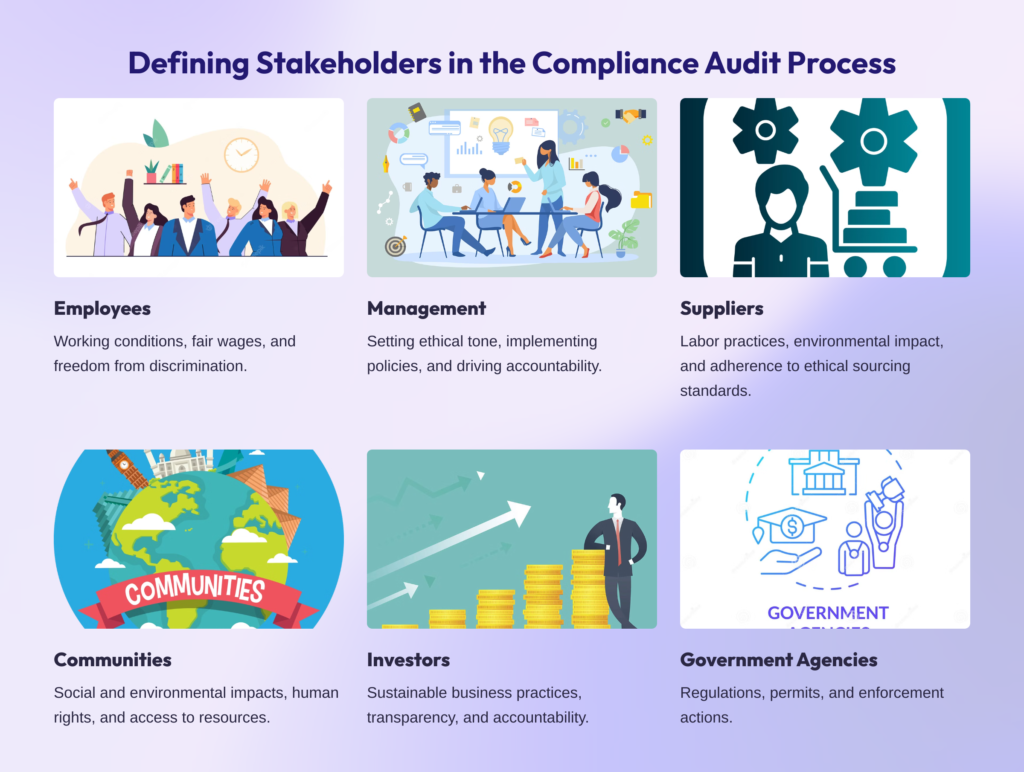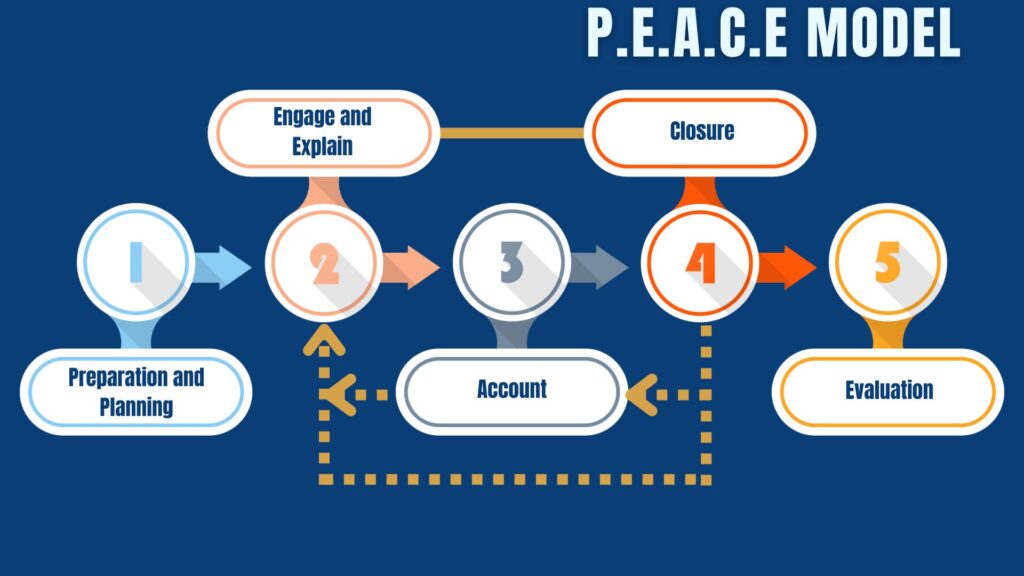In the intricate ballet of compliance auditing, particularly within the spheres of social compliance and human rights, the auditor’s role is often seen as the linchpin, the critical element that holds the potential to pivot organizations towards ethical operation and adherence to established standards. However, the success of such audits does not rest on the auditors’ shoulders alone. Stakeholders, ranging from employees and management to external partners and community representatives, play a pivotal role in shaping the audit’s outcome. This blog delves into the art and science of engaging stakeholders in ESG audits, underscoring the importance of identifying key stakeholders, consulting them to amass crucial data, and harnessing interviewing skills to unearth objective insights that enrich the audit scope.

The Symphony of Stakeholder Engagement
Imagine conducting an audit as orchestrating a symphony, where each stakeholder holds a unique instrument, contributing to the harmonious understanding of the organization’s compliance landscape. Identifying these key players becomes the first crucial step. Stakeholders within an organization can offer diverse perspectives, from management’s oversight of compliance efforts to employees’ firsthand experiences and external partners’ interactions with the organization. The script from “Effective Interviewing in ESG Audits” emphasizes the necessity of encompassing a broad spectrum of voices to ensure a comprehensive audit.
The Art of Consultation and Data Collection
Once identified, the consultation process with stakeholders begins, unfolding opportunities to gather rich, multifaceted data that paints a fuller picture of the organization’s compliance status. Each stakeholder consultation is a thread in the larger tapestry of the audit narrative, offering insights into practices, challenges, and potential areas for improvement. The data collected from these interactions are invaluable, not just for identifying non-compliance but for understanding the underlying causes and dynamics that drive organizational behavior.
Utilizing effective interviewing skills, as outlined in the PEACE model from the course script, auditors can transform stakeholder consultations into deep dives into the organization’s operational ethos. Engaging stakeholders with empathy, active listening, and strategic questioning allows auditors to collect data that is not only comprehensive but also nuanced, reflecting the complexities of social compliance and human rights issues.
Harnessing Objective Views for a Balanced Audit Scope
Stakeholders can provide objective views on aspects included in the audit scope, offering a balance to the auditor’s external perspective. This objectivity is critical in areas where compliance is not just about ticking boxes but understanding the spirit of the standard or regulation. Stakeholders, through their diverse viewpoints, can highlight discrepancies between policy and practice, offer insights into the effectiveness of implemented measures, and suggest areas for improvement that may not be immediately visible to auditors.
Moreover, consulting with a wide range of stakeholders enables auditors to validate the information collected, a process akin to triangulation in research. This validation enhances the reliability and credibility of the audit findings, providing a solid foundation for recommendations and future actions. It’s a process that underscores the script’s guidance on using the PEACE model and Dr. Shawn Christopher Shea’s techniques to foster open, honest dialogue and encourage stakeholders to share their experiences without fear of repercussions.

The Ripple Effect of Engaging Stakeholders
The benefits of engaging stakeholders in compliance audits extend beyond the audit itself. This process fosters a culture of transparency, accountability, and continuous improvement within the organization. It signals to employees, partners, and the community at large that the organization is committed to ethical practices and respects the voices of all its stakeholders. Furthermore, it sets the stage for implementing audit recommendations, as stakeholders who have been part of the audit process are more likely to be invested in the outcome and participate in the necessary changes.
Conclusion: A Collective Journey Towards Compliance
In conclusion, stakeholders are not mere bystanders in the ESG audits process; they are integral contributors whose insights, experiences, and perspectives enrich the audit scope and enhance the auditor’s ability to identify and address areas of non-compliance. By identifying key stakeholders, skillfully consulting them to collect more data, and using interviewing skills to extract objective views, auditors can ensure that their audits are not only comprehensive but also constructive. This collaborative approach to compliance auditing underscores a fundamental truth: achieving and maintaining compliance, especially in the domains of social compliance and human rights, is a collective journey, one that benefits from the active participation and engagement of all stakeholders involved.

